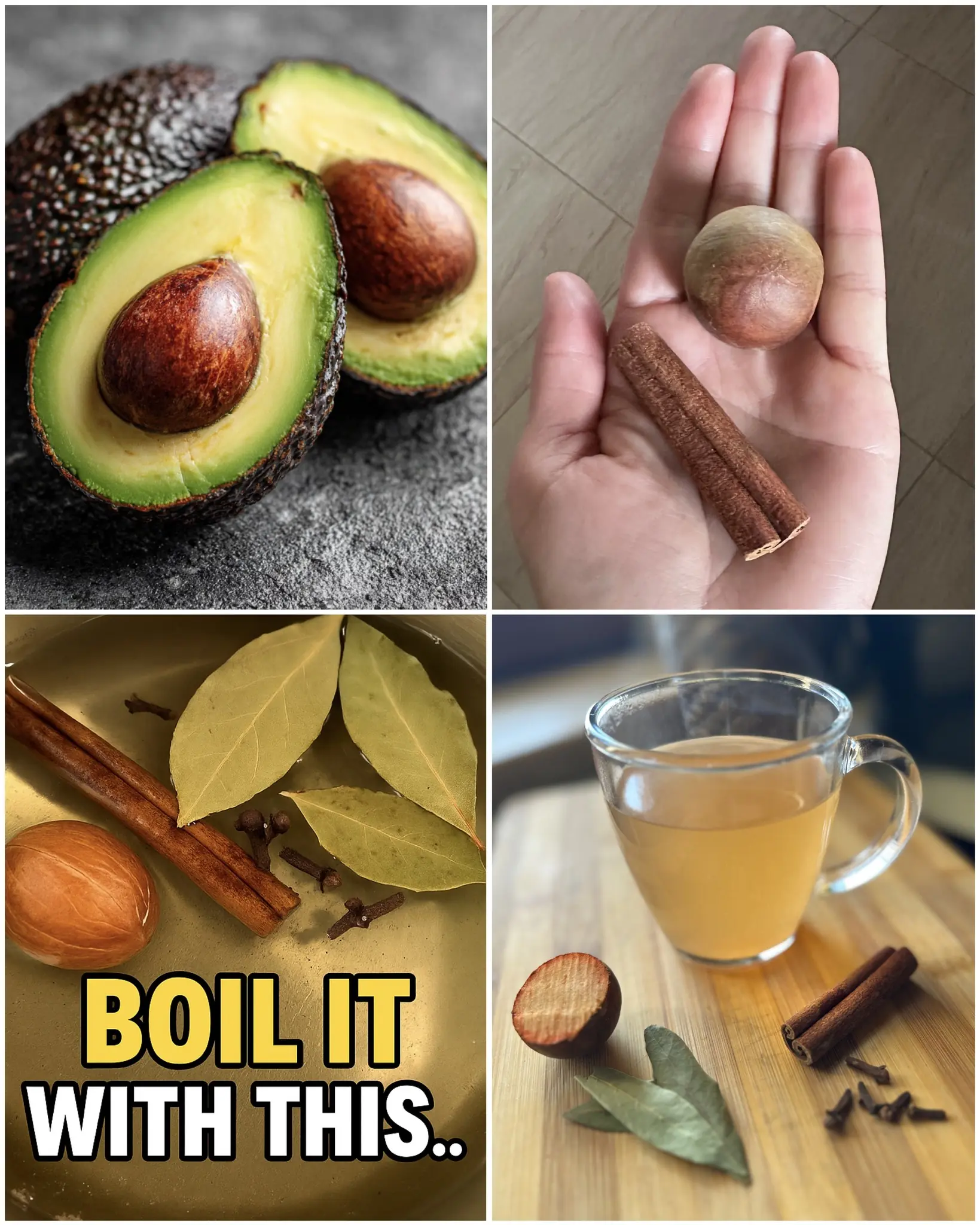
WOMEN AFTER 65: The 10-Day Castor Oil + Epsom Salt Foot Soak That May Transform How You Feel
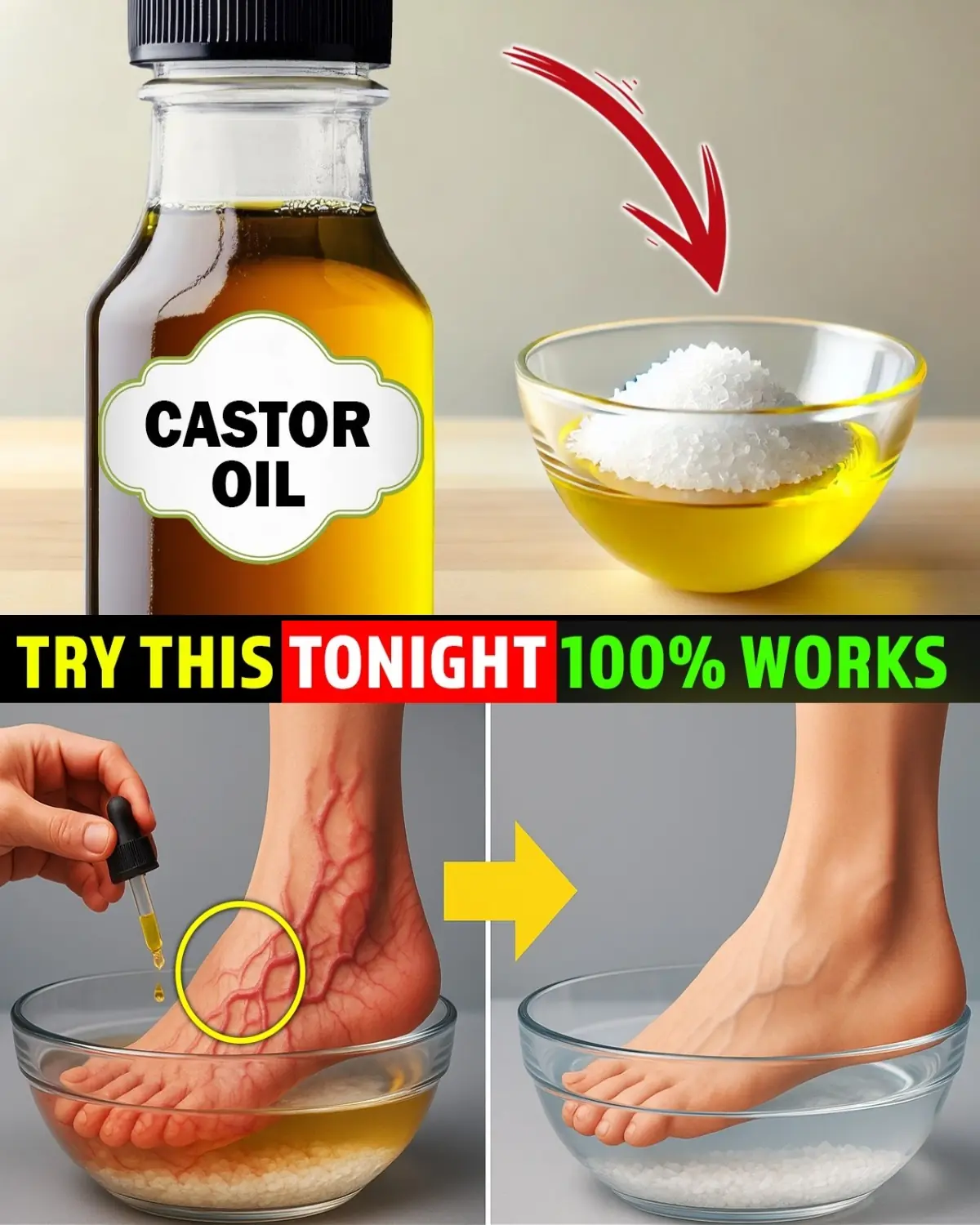
What if ten quiet evenings could change how your body feels — starting from your feet?
Picture this: warm water swirling around your tired soles, a faint scent of earth and eucalyptus in the air, and a silky oil coating your skin as the day’s fatigue melts away. For many women after 65, this isn’t just comfort — it’s rediscovery.
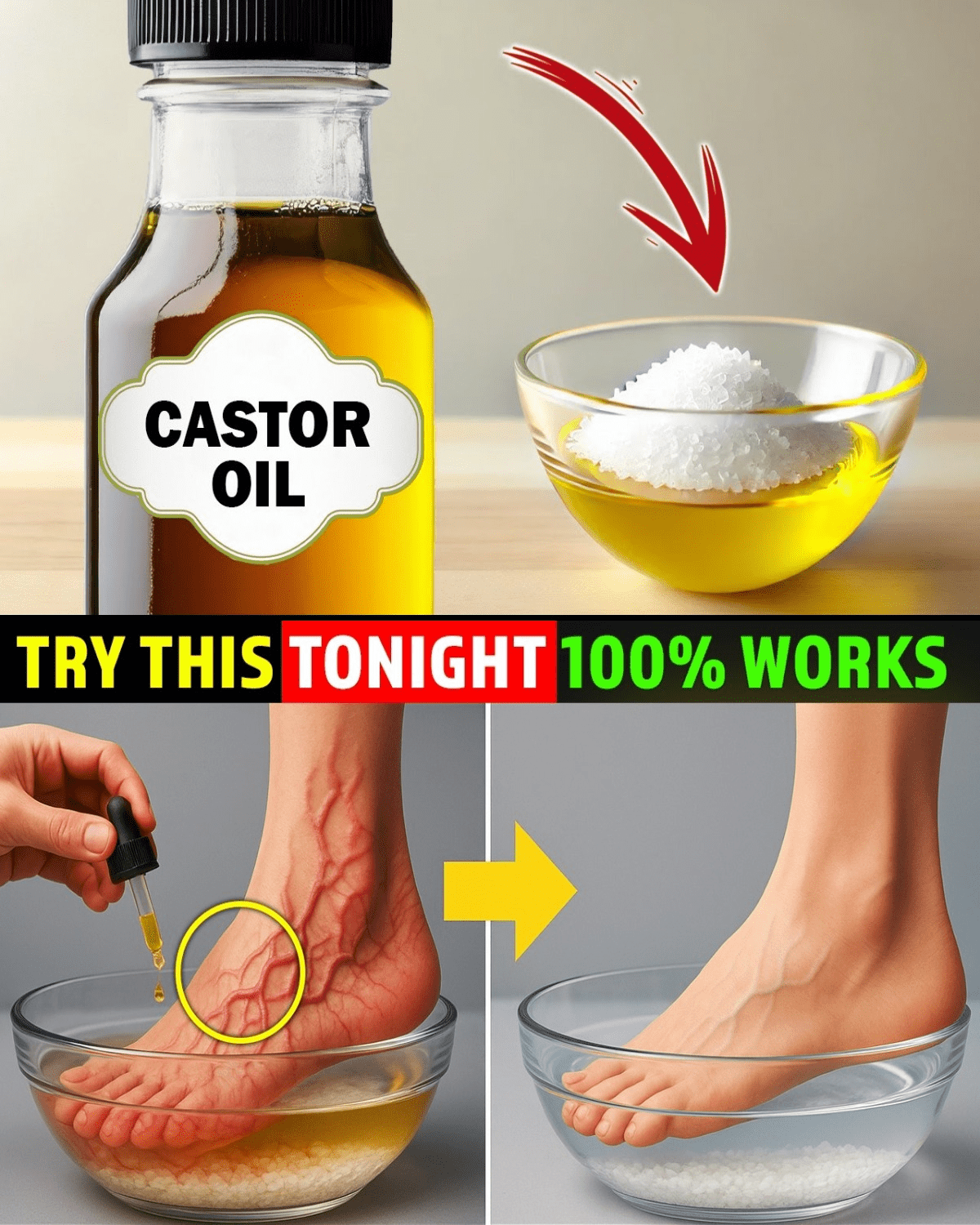
Could something as simple as a foot soak really make a difference? Let’s find out why so many seniors are talking about the castor oil + Epsom salt ritual… and how, after just 10 days, it may help you feel lighter, calmer, and surprisingly more energized.
The Hidden Problem Beneath Our Feet
As we age, our feet quietly carry decades of steps, swelling, poor circulation, and discomfort. Many women over 65 describe that heavy-leg feeling — like walking through sand.
And yet, most self-care routines stop at the ankles.
The truth is, ignoring foot health doesn’t just affect comfort. It can ripple upward — influencing balance, sleep, even mood.
Have you noticed your feet feeling colder lately? Or that twinge after standing too long?
Those subtle signals often point to reduced blood flow and inflammation — two issues that can quietly drain your energy and confidence.
So where does this simple foot soak fit in?
The Ancient Duo with Modern Appeal
For generations, castor oil and Epsom salt have lived in medicine cabinets — but rarely together.
Individually, they’re humble. Combined, they may be powerful.
- Castor oil, rich in ricinoleic acid, is known for its thick, warming texture that can soothe skin and stimulate gentle circulation.
- Epsom salt, or magnesium sulfate, dissolves into ions that can relax muscles and calm the nervous system.
When mixed in warm water, they create what some call “a mini spa for your body’s foundation.”
But how can such an old-fashioned remedy still make sense today?
Let’s walk through the surprising science — and the stories of two women who tried it.
Case Study #1: Ellen, 68 — “I didn’t realize how tense I was until I relaxed.”
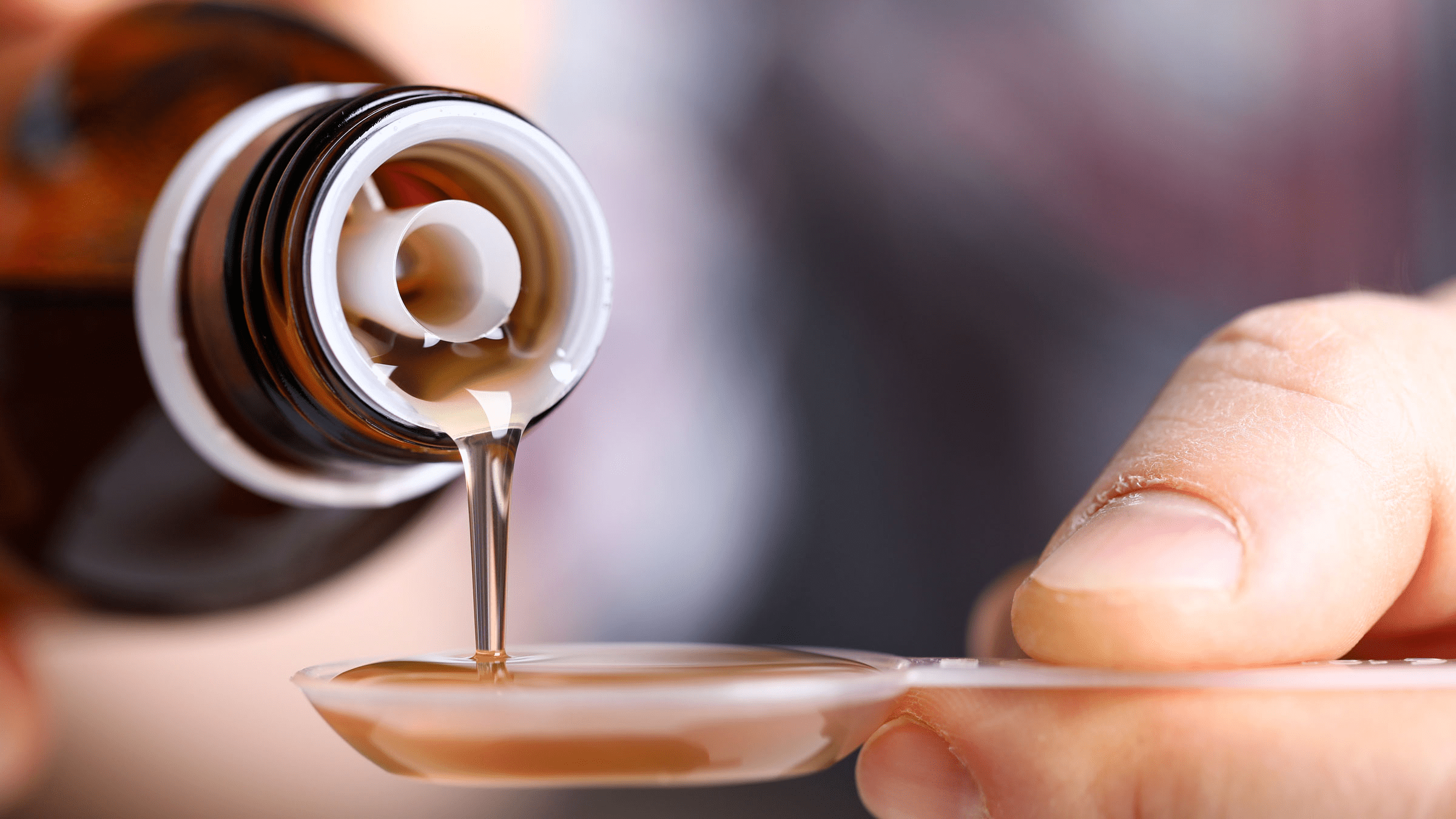
Ellen had restless legs and stiff ankles every night. Her daughter suggested the castor oil + Epsom soak challenge — ten days, twenty minutes each night.
“By day four, my feet felt like they belonged to me again,” she laughed. “By day seven, I slept through the night.”
Was it magic? Probably not. But studies have shown that warm magnesium soaks can help muscles release tension and promote a deeper sense of calm.
And when circulation improves, energy often follows.
But that’s only one piece of the puzzle.
Why This Combo Works So Deeply
The secret may lie in the contrast between oil and salt — hydration versus detoxification.
| Ingredient | What It May Do | Sensory Benefit |
|---|---|---|
| Castor Oil | Moisturizes, supports skin elasticity, promotes warmth | Silky texture, faint earthy aroma |
| Epsom Salt | May ease swelling, relax muscles, support magnesium absorption | Gentle fizz, soothing weight in water |
| Warm Water (100°F-105°F) | Encourages blood flow and relaxation | Comforting heat, meditative rhythm |
When you combine these elements, you’re not just soaking your feet — you’re signaling your nervous system that it’s safe to rest.
Have you noticed that the more relaxed your body feels, the more your mind quiets down? That’s no coincidence.
9 Potential Benefits of a 10-Day Castor Oil + Epsom Salt Soak
Let’s explore what this ritual may bring when practiced consistently.
9. Smoother, More Hydrated Skin
Castor oil penetrates deeply, softening calluses and dry patches. After just a few sessions, many notice a visible glow — almost like the skin has been “fed.”
8. Gentle Detox for Tired Feet
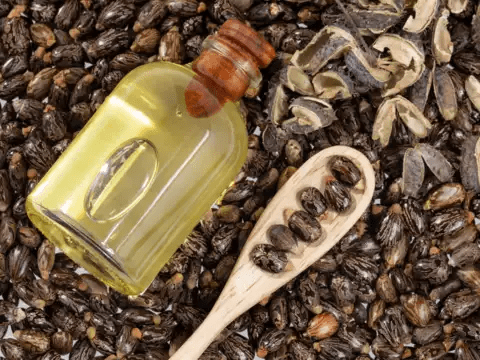
Epsom salt may draw out impurities through osmosis, leaving your feet feeling lighter and fresher. “It was like I walked out of a cloud,” said one reader.
7. Relief from Minor Swelling
Warmth plus magnesium may help move stagnant fluids — a common cause of puffiness in the ankles and toes.
6. Better Sleep Quality
Because magnesium supports relaxation, many women report deeper, uninterrupted rest after a nighttime soak. Could your next good night’s sleep start at your feet?
5. Improved Circulation
The warmth and gentle stimulation can awaken blood flow, helping cold feet feel warm again — a comfort on winter nights.
4. Reduced Muscle Tension
Tight calves, arches, or toes may loosen naturally. You might even notice your gait improving.
3. Mental Calm and Emotional Ease
Warm water soaks have been shown to lower cortisol levels. “It’s my 20 minutes of peace,” said a 70-year-old widow who made it her nightly ritual.
2. Easier Morning Mobility
After several days, stiffness upon waking may feel less intense. Every step feels like a small victory.
1. Renewed Sense of Vitality
When comfort returns to your foundation, confidence often follows. One reader wrote, “I didn’t just feel better — I felt younger.”
But wait — there’s something even more interesting…
The “Nerve Connection” Few People Talk About
Here’s what’s often overlooked: your feet are packed with over 7,000 nerve endings.
When you soak them, you’re not just treating the skin — you’re sending messages to your entire body.
That’s why reflexology and warm compresses have been used for centuries. They communicate with your nervous system.
And castor oil’s thick texture can enhance that contact, helping you stay present and aware of every sensation.
Case Study #2: Marjorie, 72 — “It became my nightly reset.”
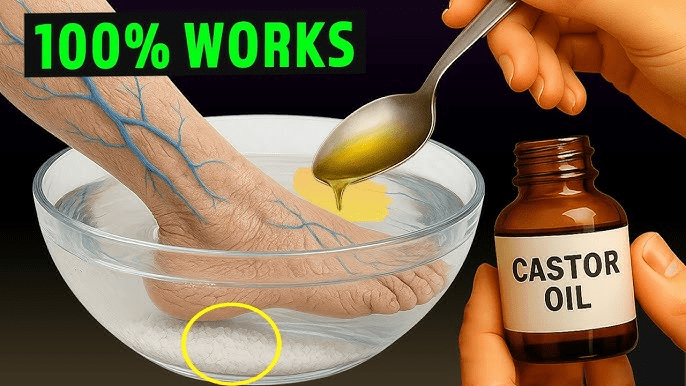
Marjorie used to feel drained by afternoon. Her daughter set up a “soak station” with a basin, towel, and a few drops of lavender essential oil.
“The first night, it just felt nice. By the tenth, I caught myself humming again.”
For her, it wasn’t only about physical relief — it was about reclaiming a sense of control. “I finally had something simple that worked for me,” she said.
Maybe that’s the real secret: slowing down long enough to listen to what your body’s asking for.
How to Try It Safely at Home
| Step | What to Do | Notes & Tips |
|---|---|---|
| 1. Prepare the Basin | Fill with warm water (ankle-deep). | 100°F–105°F is ideal. |
| 2. Add Ingredients | ½ cup Epsom salt + 1 tablespoon castor oil. | Stir gently until dissolved. |
| 3. Optional Extras | Add a few drops of essential oil (lavender, peppermint). | Avoid if you have allergies. |
| 4. Soak Time | 15–25 minutes. | Relax, read, breathe deeply. |
| 5. Aftercare | Pat dry and massage leftover oil into skin. | Wear soft socks for overnight moisture. |
| 6. Frequency | 10 days consecutively, then 2–3 times weekly. | Adjust if you notice skin sensitivity. |
Safety Notes
- Do not soak open wounds or broken skin.
- If you have diabetes, poor circulation, or neuropathy, consult your healthcare provider first.
- Always test a small area for oil sensitivity.
“But Does It Really Work?”
You might be thinking: Can a foot soak really change how I feel overall?
It’s a fair question.
Research on magnesium baths and topical oils is growing but not conclusive. Still, early findings suggest they may support muscle relaxation, stress reduction, and better sleep.
More importantly, small rituals like this can reintroduce mindfulness into your day — something modern medicine often overlooks.
And while the science continues to evolve, the feedback from women like Ellen and Marjorie speaks volumes: consistency brings comfort.
The Bigger Picture: Healing Starts Where You Stand
Your feet are the first to meet the floor each morning and the last to rest each night.
Caring for them isn’t vanity — it’s self-respect.
Imagine turning an ordinary basin of warm water into a sanctuary of calm, a 20-minute promise to yourself.
After ten days, you might not just notice softer feet…
You might notice yourself — moving, sleeping, and smiling a little easier.
So tonight, why not begin? Your only tools: warm water, a handful of salt, a spoonful of oil, and a little patience.
P.S. Few people realize that castor oil, when stored in glass and slightly warmed before use, releases a richer aroma and absorbs better into the skin. Try it once — you might never go back to dry lotions again.
This article is for informational purposes only and is not a substitute for professional medical advice. Always consult your healthcare provider for personalized guidance.
News in the same category

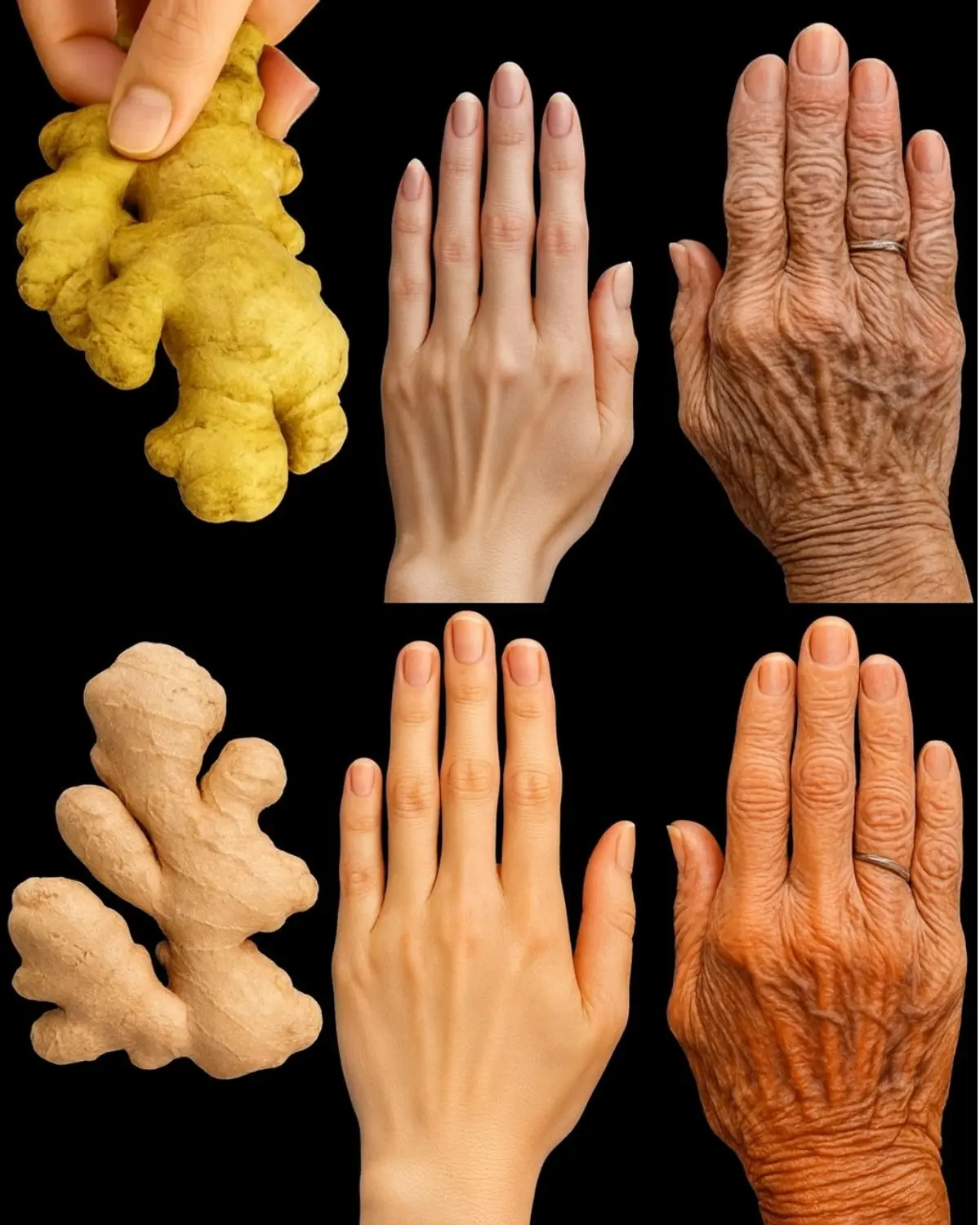
Ginger’s Gentle Touch for Hands That Tell Your Story
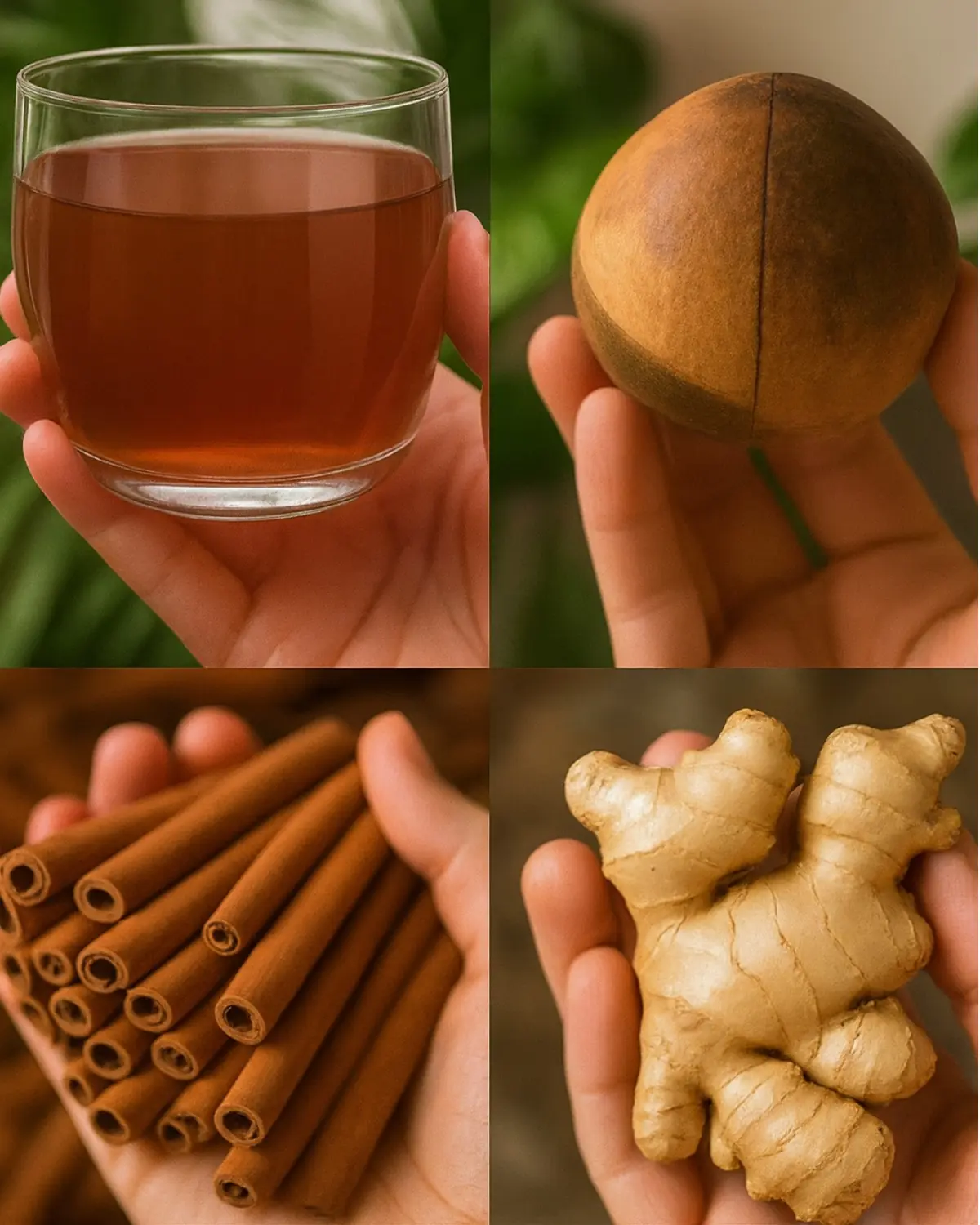
Unlock the Cozy Comfort of Cinnamon, Ginger, and Herbal Tea for Daily Ease

Unleash Your Inner Lion: The Egg, Honey, and Coffee Mix for Ultimate Male Vitality

5 Best Drinks to Soothe Acid Reflux Naturally

What Your Urine Color Says About Your Health
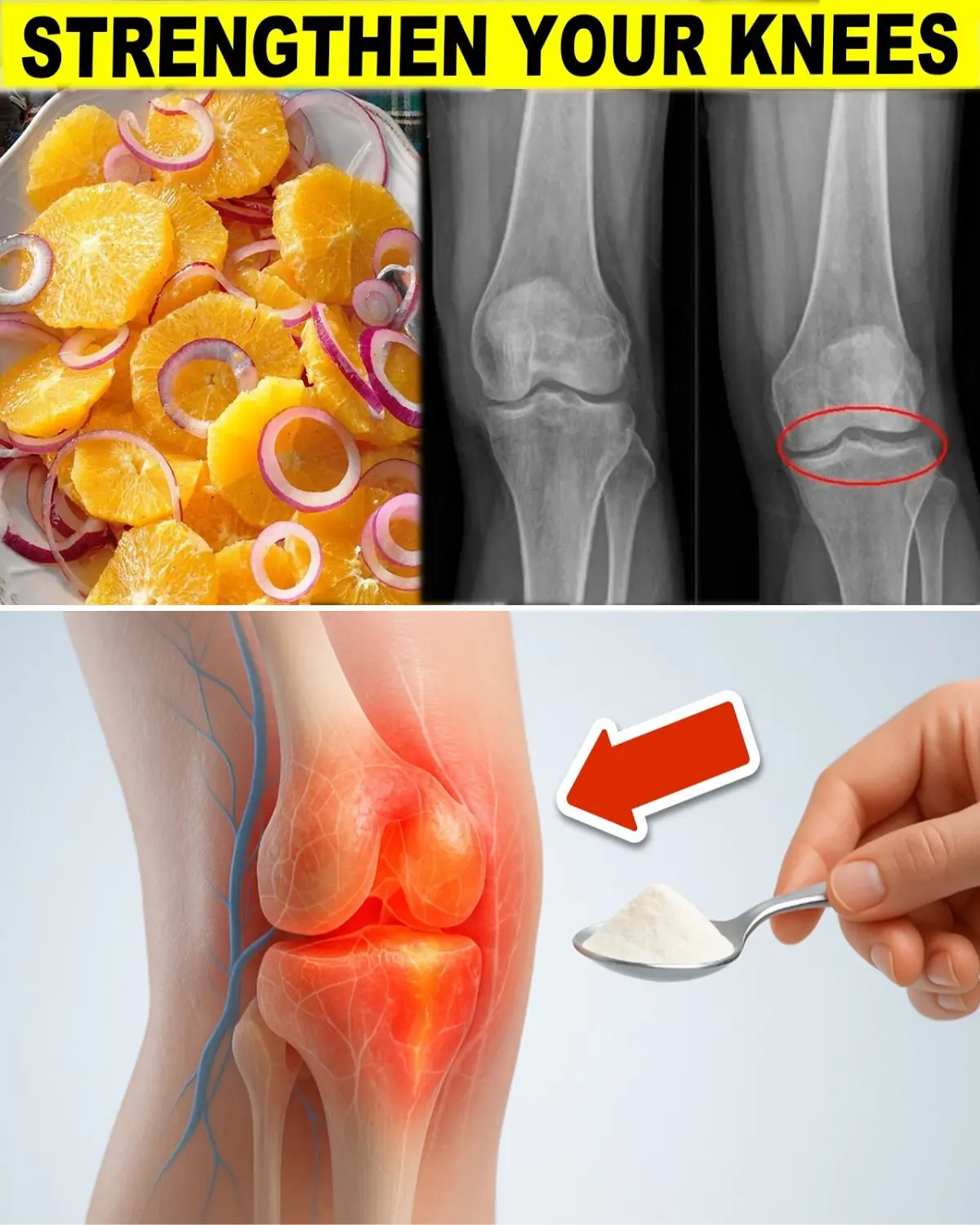
9 Easy Ways to Strengthen Your Knees, Cartilage & Ligaments
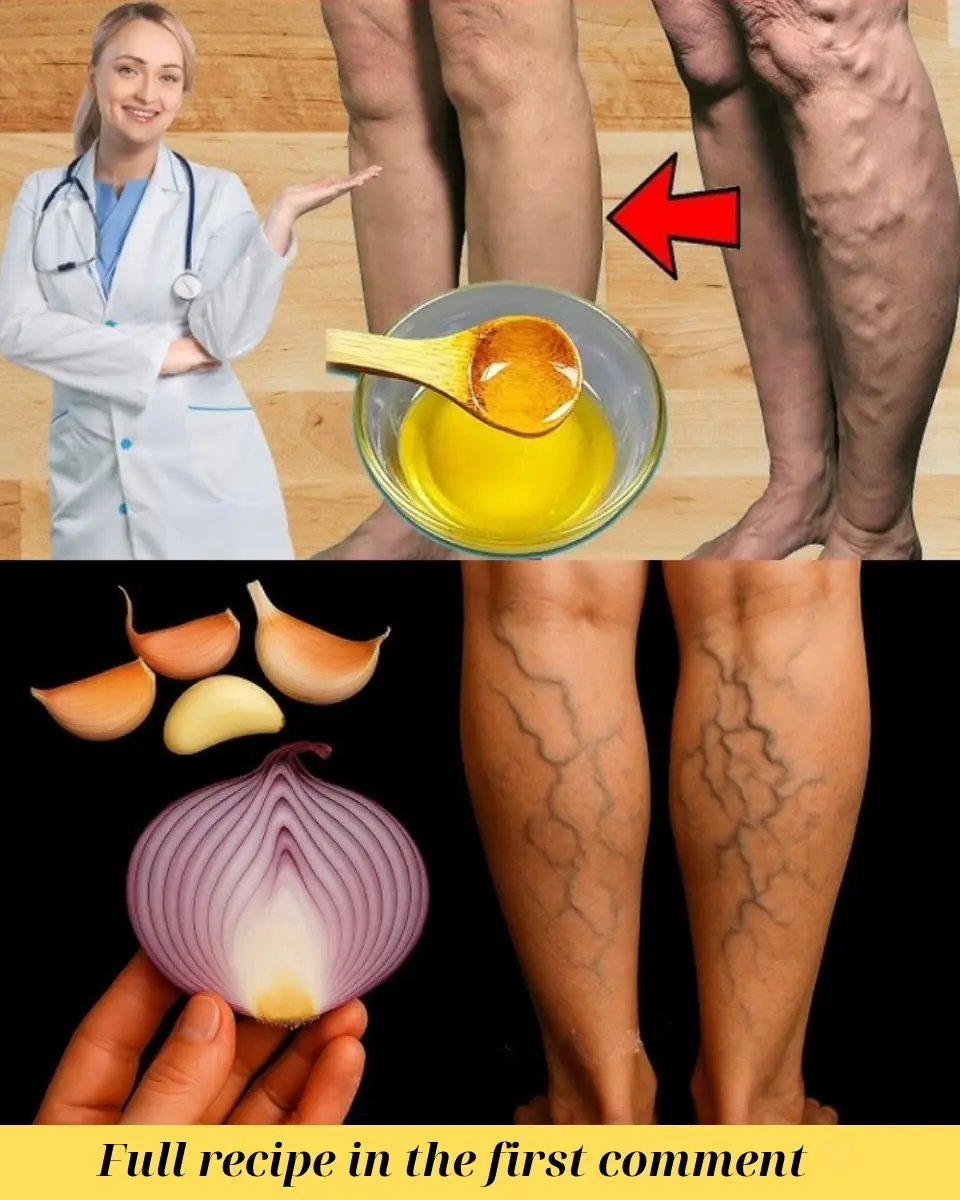
Garlic: Nature’s Secret to Soothing Varicose Veins Naturally

11 Common Egg-Eating Mistakes That Could Harm Your Health
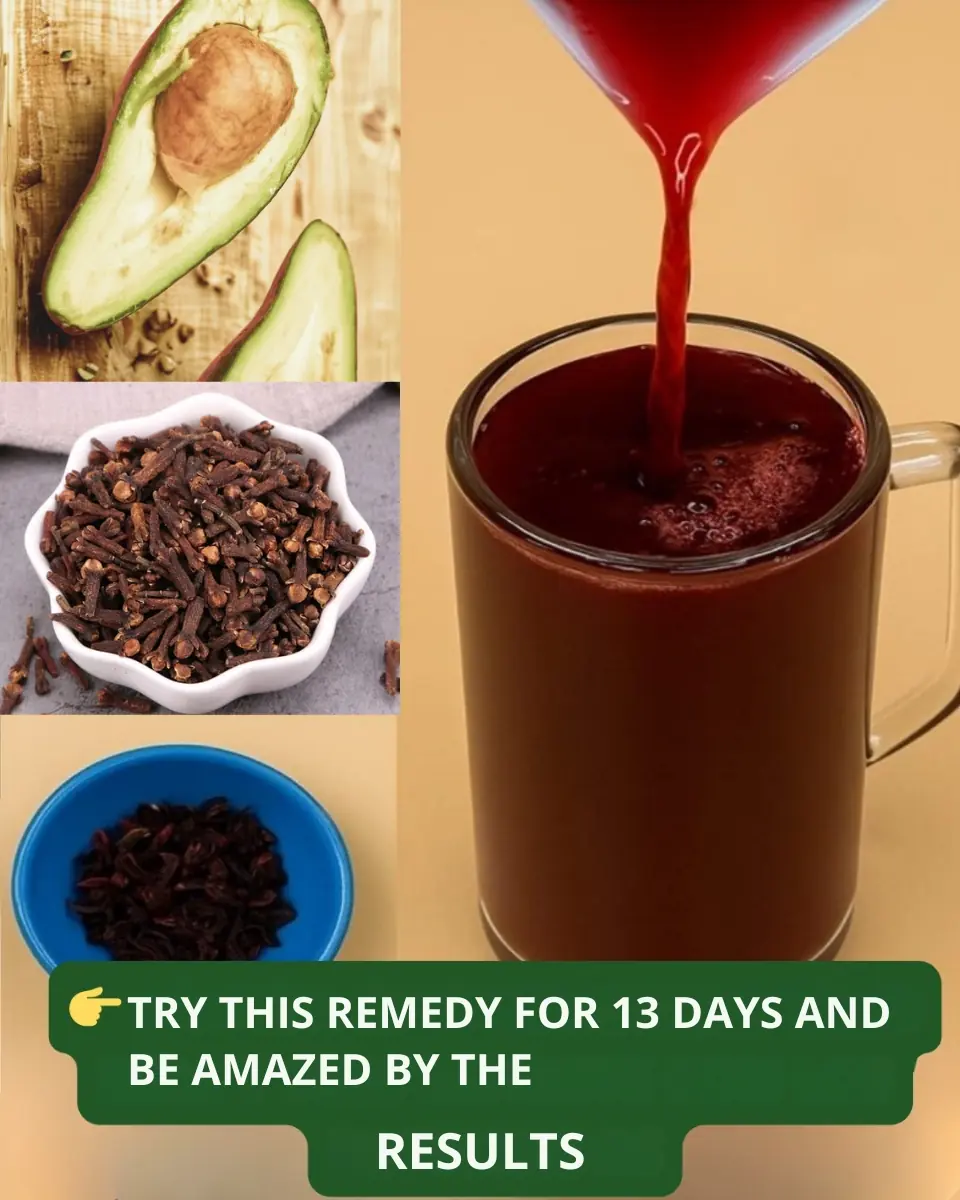
The Hidden Power of the Avocado Seed: Nature’s Overlooked Treasure
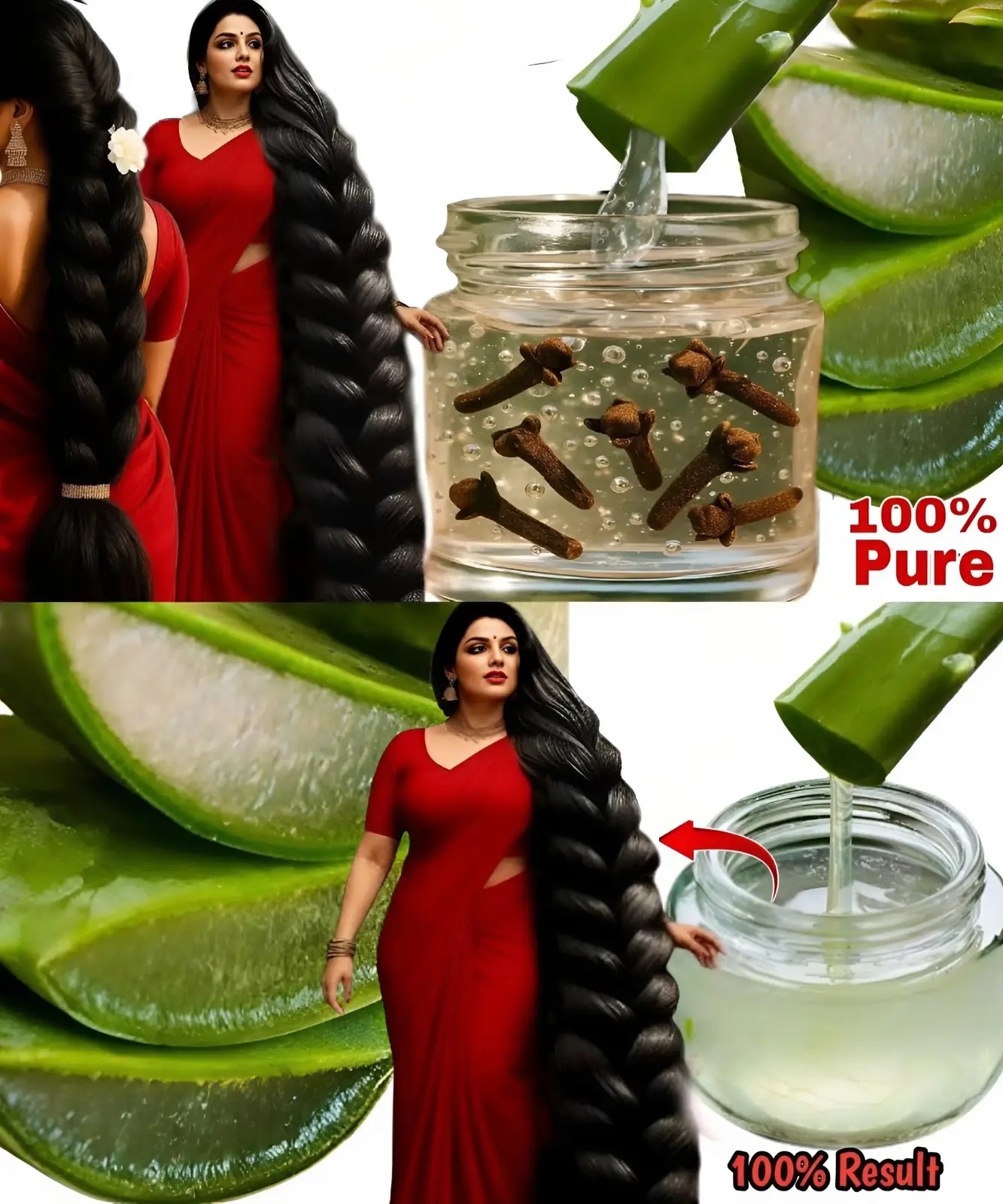
Homemade Hair Growth Gel: Aloe Vera + Clove for Thicker, Longer Hair in Just 1 Week

Try This for Both Men and Women: Lemon Coffee Mix — It Might Change Your Life
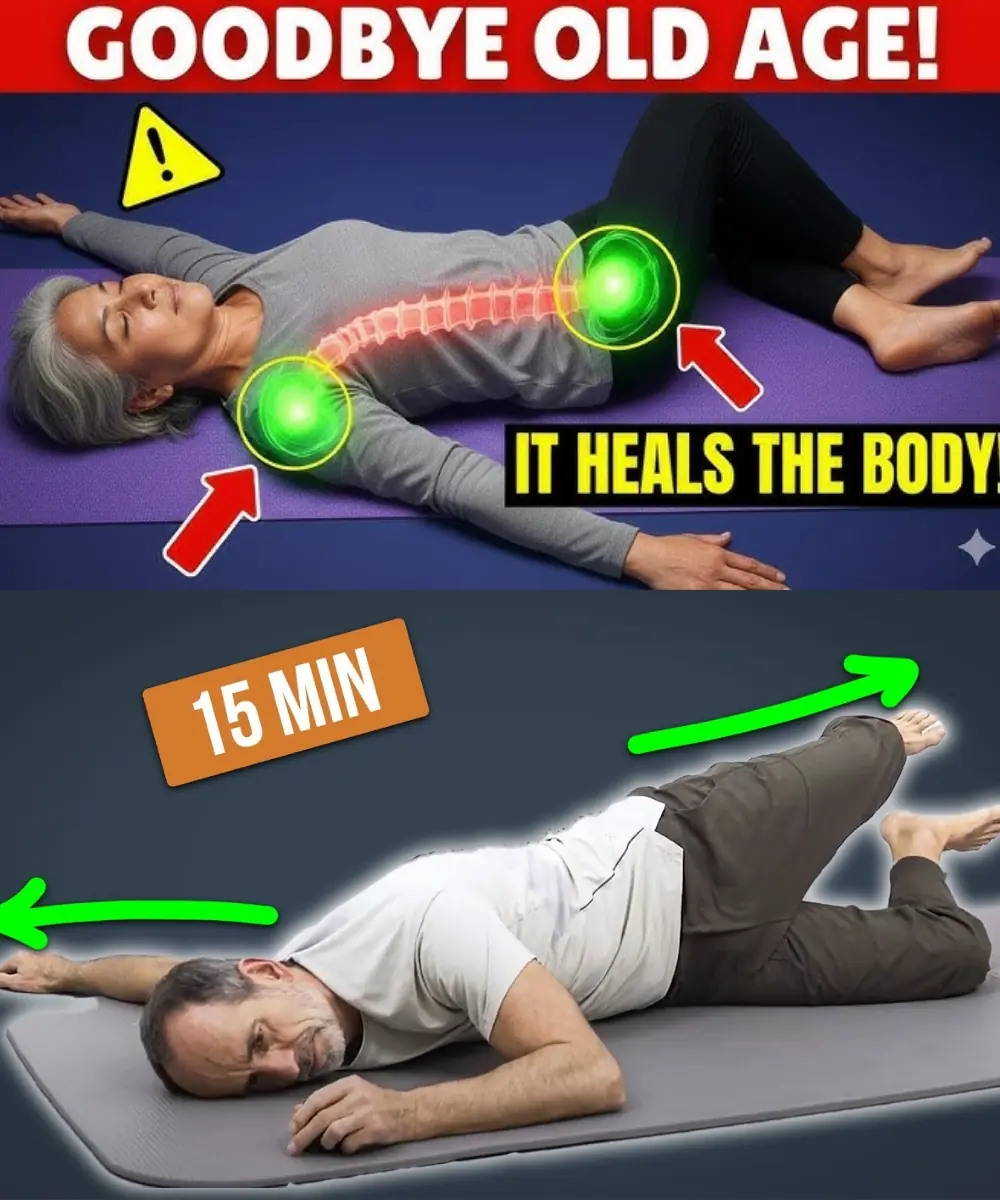
Over 60? 5 Bedtime Movements Japanese Elders Swear by (No Gym, Just Results Daily)
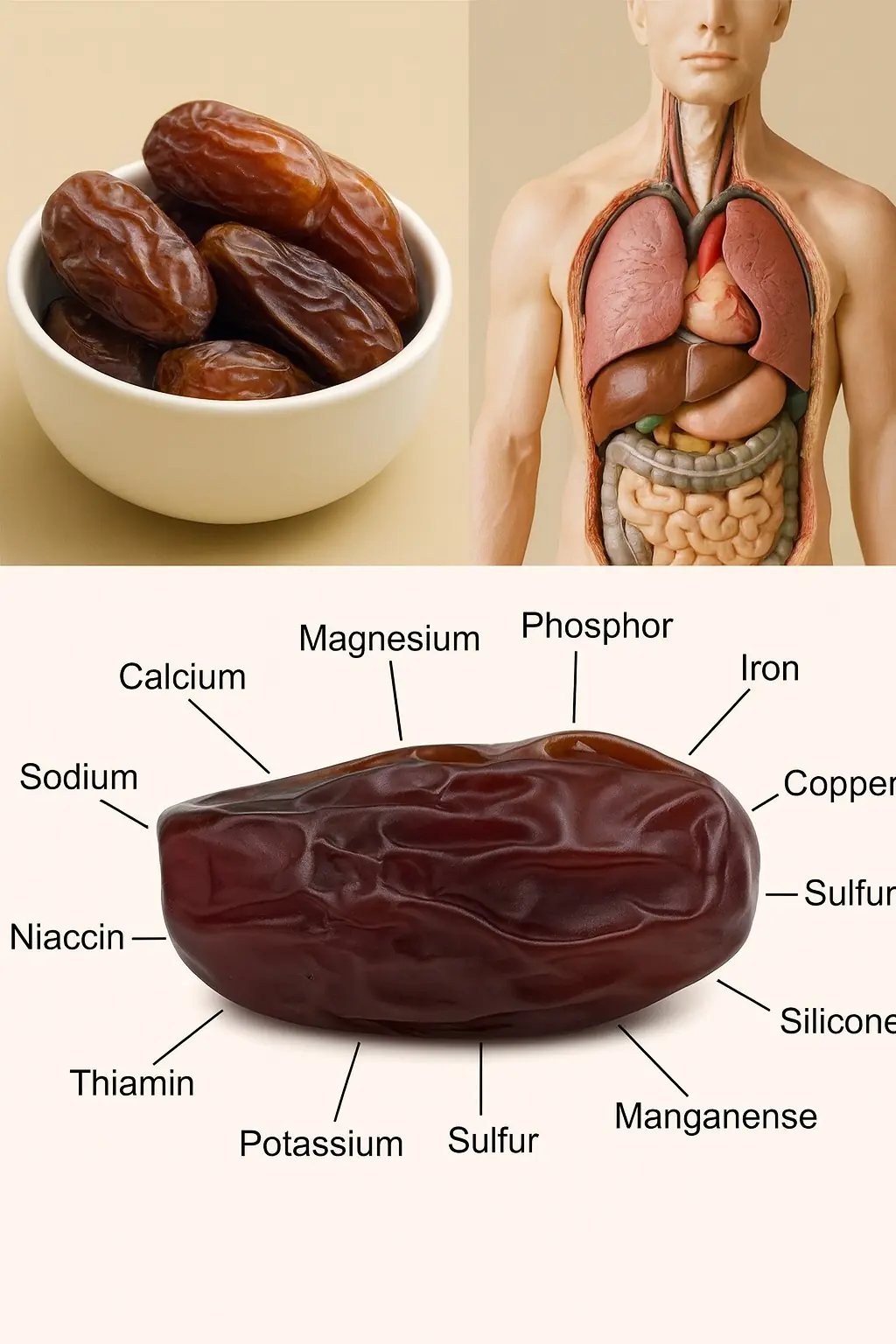
The Incredible Benefits of Dates: A Nutrient-Rich Superfood

This Onion Recipe Cleans Your Arteries, Destroys Diabetes, and Saves Your Heart
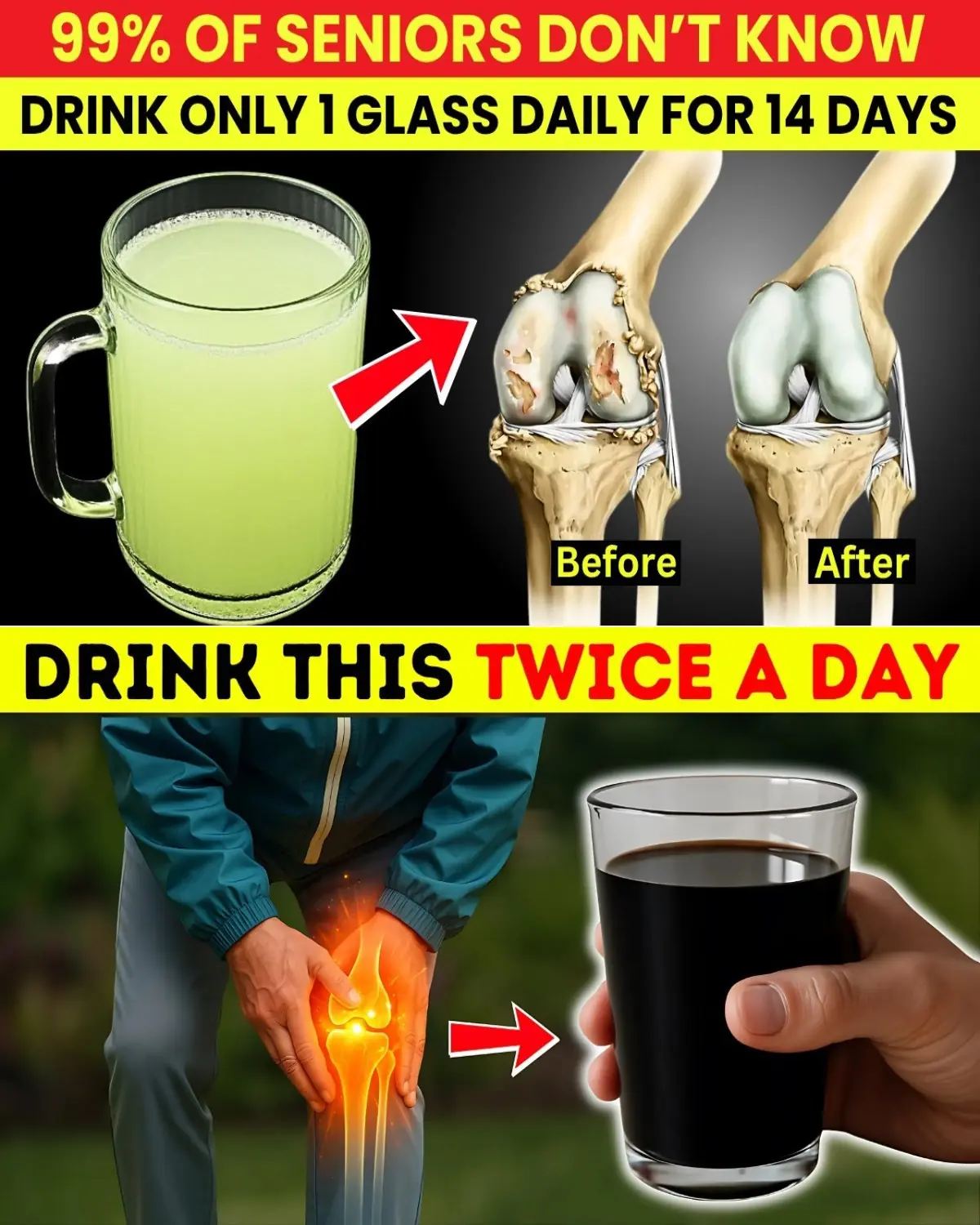
Knee Pain Relief Starts with This Powerful Drink – Seniors Must Try!
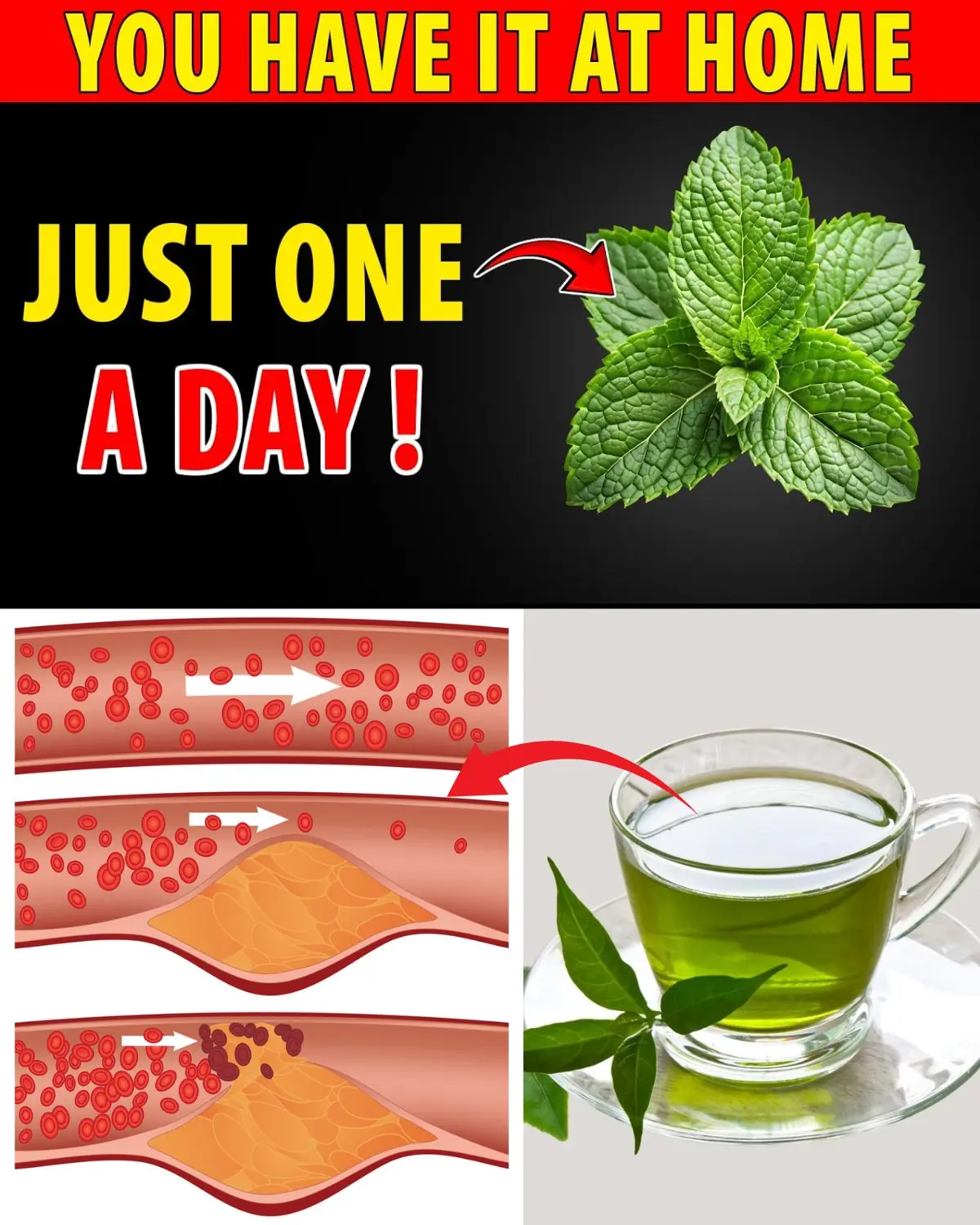
Miracle Alert! 1 Leaf That May Support Healthy Blood Sugar, Cholesterol, and a Trim Waist
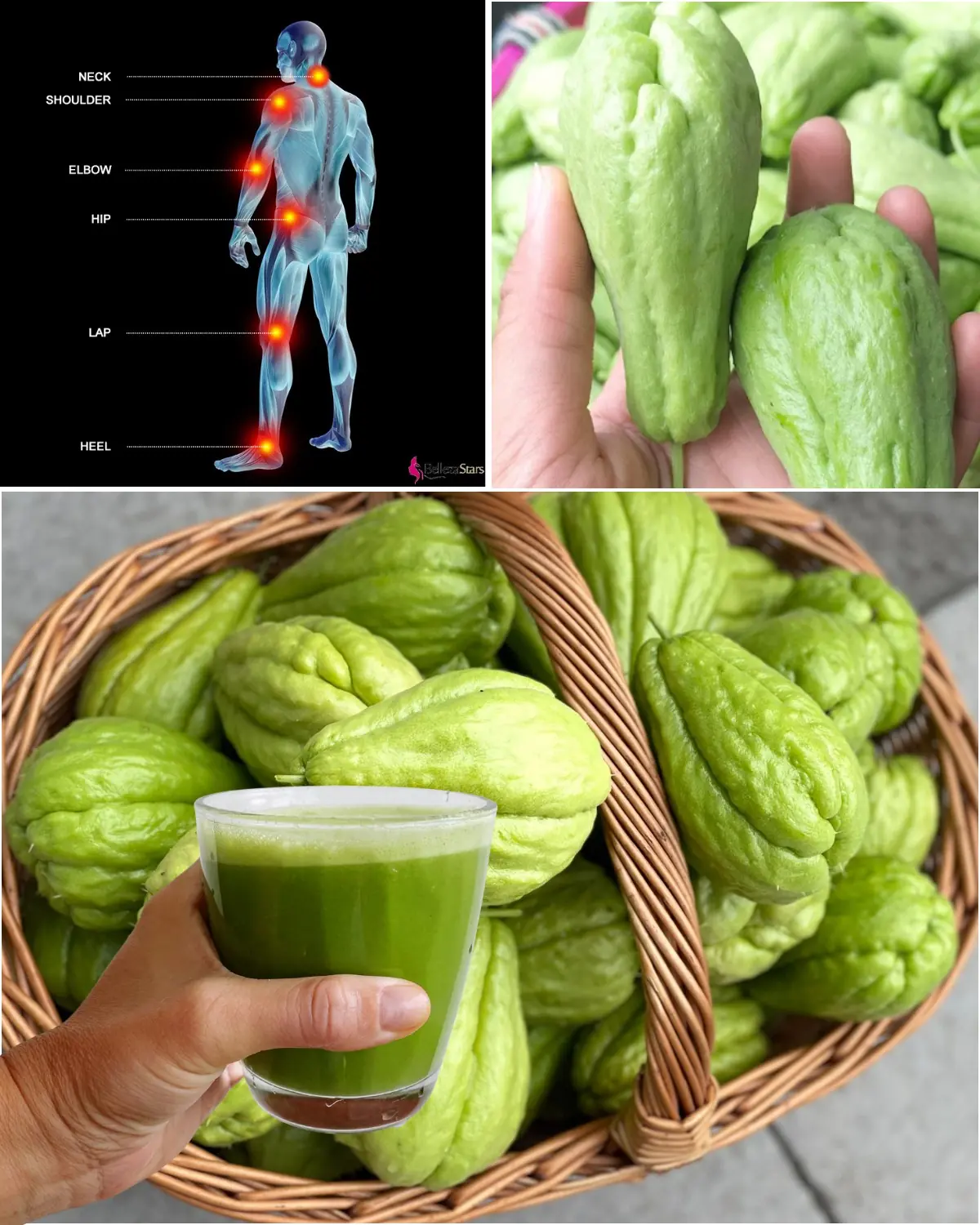
Chayote Juice: Unlock Natural Support for Joints and Bones
News Post

Avocado Seed Powder: How to Make It and Its Benefits

Ginger’s Gentle Touch for Hands That Tell Your Story

Unlock the Cozy Comfort of Cinnamon, Ginger, and Herbal Tea for Daily Ease

The Color of Your Stool Is Warning You About Your Health!

A 3-Year-Old’s Final Walk: Honor, Sacrifice, and Hope
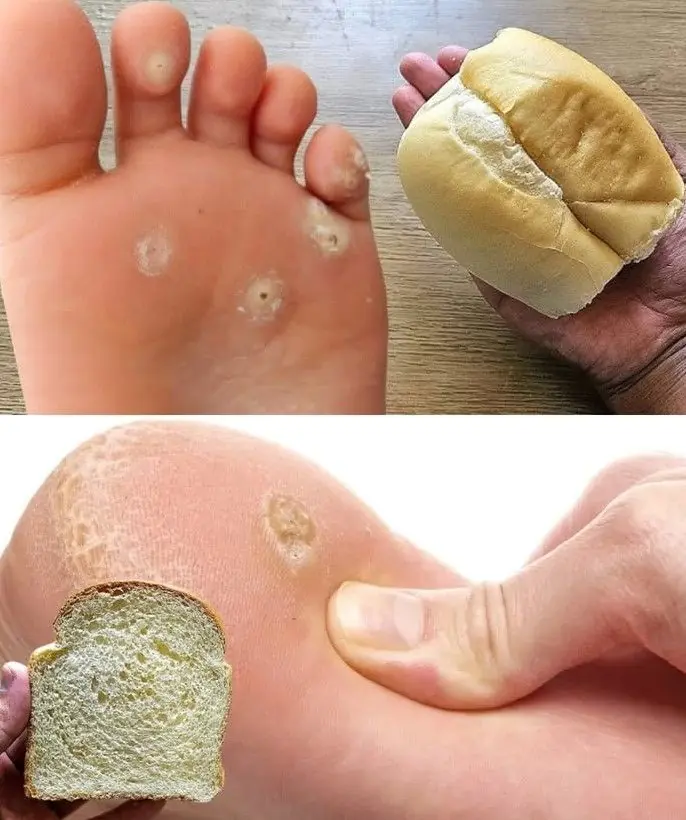
Remove Foot Calluses Naturally with This Simple Bread Remedy

Unleash Your Inner Lion: The Egg, Honey, and Coffee Mix for Ultimate Male Vitality

5 Best Drinks to Soothe Acid Reflux Naturally

What Your Urine Color Says About Your Health

9 Easy Ways to Strengthen Your Knees, Cartilage & Ligaments

Garlic: Nature’s Secret to Soothing Varicose Veins Naturally

11 Common Egg-Eating Mistakes That Could Harm Your Health

The Hidden Power of the Avocado Seed: Nature’s Overlooked Treasure

Homemade Hair Growth Gel: Aloe Vera + Clove for Thicker, Longer Hair in Just 1 Week

Try This for Both Men and Women: Lemon Coffee Mix — It Might Change Your Life

Over 60? 5 Bedtime Movements Japanese Elders Swear by (No Gym, Just Results Daily)

The Incredible Benefits of Dates: A Nutrient-Rich Superfood

This Onion Recipe Cleans Your Arteries, Destroys Diabetes, and Saves Your Heart
